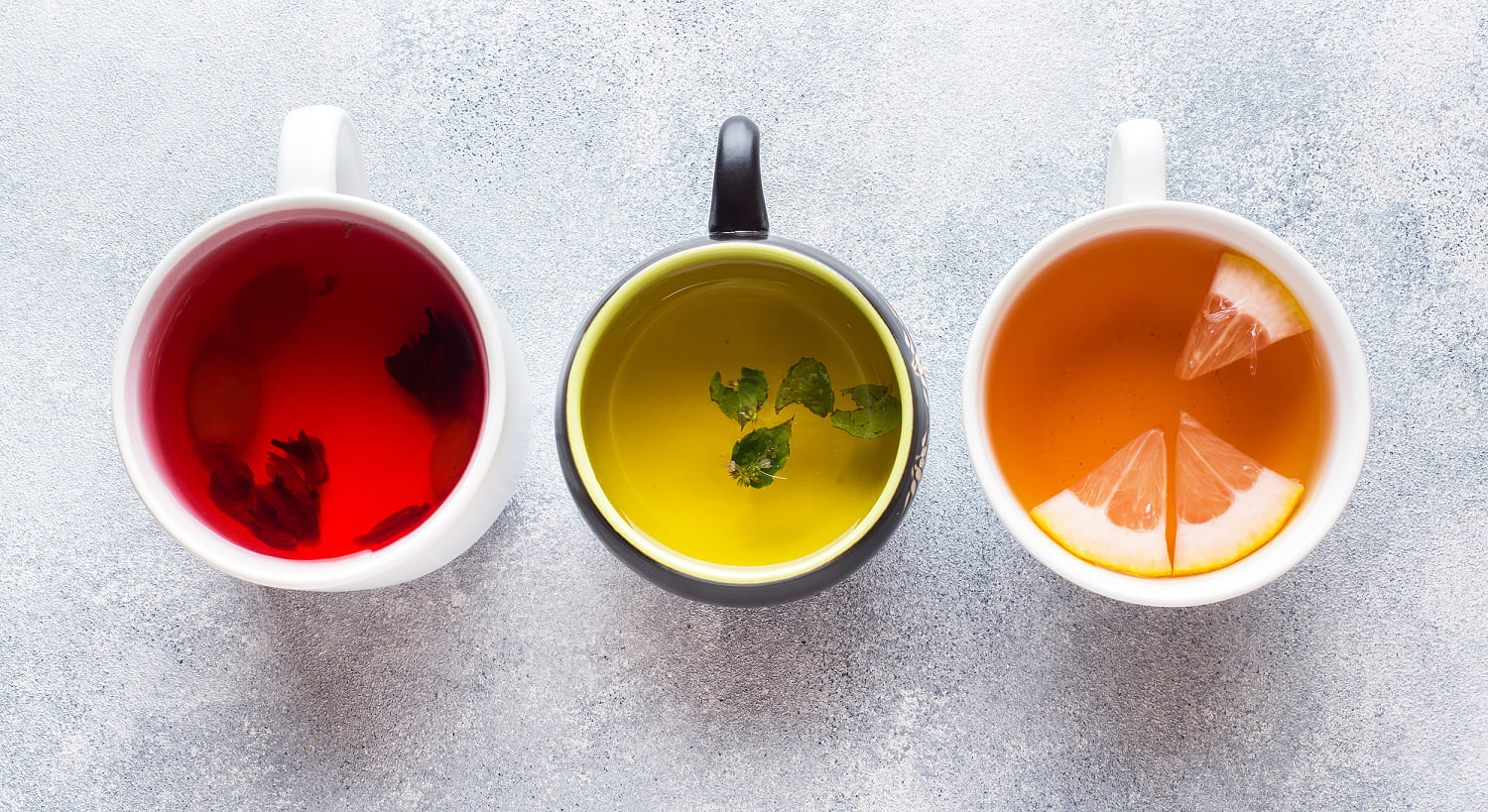After water, tea is the in the world. In fact, it’s been enjoyed in China and Japan for While many of us drink tea for its delicious flavor, it’s also extremely , depending on how you prepare it. Considering the number of teas out there, however, you might be wondering which tea is healthiest.
Let’s take a look at the healthiest types of tea and how to make the best cup. Pinkies up! While the various types of tea–black, green, oolong and white–may taste and look quite different, they’re all made from the same evergreen plant, the healthiest tea. The plant is rich in flavonoids, which provide bioactive compounds that help fight free radical damage.

Free radicals cause damage to our body’s cells over time and contribute to diseases like cancer and heart disease. In addition to flavonoids, tea is also abundant in the amino acid L-theanine, which provides health benefits and also gives tea its distinctive notes of caramel. According to studies, L-theanine has myriad .
It acts as an antioxidant and anti-inflammatory, and helps protect the , heart, liver, and kidneys, as well as helping to lower and protect us from cancer. While the of tea varies by season and stage of growth, it is quite similar in green, white and oolong teas, with black tea having slightly lower amounts. After being harvested, fresh tea leaves go through various processes before they’re made into the tea products we use at home.
These processes include fermentation and baking and both can alter the flavor, color, aroma and chemical composition of the tea. Depending on the length of fermentation, tea is sorted into six categories: green, yellow, white, oolong, black and dark teas (aka Puer tea). Another substance in tea, caffeine, pairs up with L-theanine to provide a boost to attention and alertness.
One small study in boys with ADHD found that the combination of caffeine and L-theanine could provide . Plus, a published in Sept. 2024 in the Journal of Clinical Endocrinology & Metabolism found that drinking several cups of caffeinated coffee or tea may boost heart health.
The drink can protect from Type 2 diabetes, coronary heart disease and stroke. Of course, too much caffeine has its risks, but two-to-three cups a day is the sweet spot, researchers found. There are other teas with benefits worth noting.
For example, been found to be a safe and effective treatment for people experiencing anxiety. can help soothe an upset stomach and relieve gas and bloating, and is a safe and effective treatment for nausea during pregnancy. In addition to traditional tea, there are other plants that are consumed by brewing the leaves — though they aren't actually teas.
One plant, , also known as rooibos, has a particularly outstanding mix of health attributes. , often referred to as “red tea,” is caffeine-free and low in bitter tannins, making it popular with children and other folks who don’t enjoy the natural bitterness of black tea. contains minerals, flavonoids and phenolic compounds that have antioxidant benefits.
No matter which variety it is, unsweetened tea contains virtually no calories or fat. But if you sweeten it, that's a different story. A typical recipe for making “sweet tea” calls for 1⁄2 cup of sugar for a pitcher that serves 6, bringing the amount of sugar per glass to about 17g of sugar.
According to the , women should keep their to 25g per day, while men should stick to no more than 36g daily. This would mean only one glass of would fit into your daily intake, and that’s if you’re avoiding added sugars from most other sources. If you Google “superfood tea” you’ll get pages of results touting various tea products, but when it comes to science-backed benefits, only one variety stands out.
All types of tea provide a decent dose of antioxidants, but the are found in green tea, followed by yellow, oolong, Puer, black and white tea. There’s a particular type of antioxidant called in green tea that sets it apart from the other varieties. Catechins are able to neutralize free radicals, which cause damage to our body’s cells.
There are several catechins in green tea, but the one with the most , anti-diabetic and anti-inflammatory benefit is epigallocatechin gallate (ECGC). In addition the these significant benefits, ECGC also shows promise of protecting skin from when applied to the skin. While tea can't solely be responsible for weight loss, there are several studies that show a effect in overweight people from drinking green tea over a 12-week period.
One found a significant reduction in body weight, BMI and waist circumference in people with diabetes who drank 4 cups of daily. Before you stock your cabinet with boxes of green tea, be sure to talk to your physician about whether this is a safe option for you. At face value, tea may seem like the simplest thing to make.
After all, it’s just a combination of a tea bag or loose tea and water. But the temperature of your water and the steeping time can make all the difference between a weak cup of tea and something you'd want to reach for again and again. Let’s start with the water, which should be brought to a rolling boil at 212° F.
You can either bring a kettle of water to boil on the stove or use an eclectic kettle, many of which have settings for the various types of teas. One thing you shouldn’t use to heat your tea water? Your microwave. It can heat water unevenly, leading to less than stellar results.
Once your water has come to a boil, pour it over a tea bag in a heat-safe mug, or add to a pot with the appropriate amount of tea bags or loose tea inside. For green and white tea: Let the tea steep for 1 to 2 minutes, then discard the tea bag or leaves. For oolong and black tea: Let the tea steep for 3 to 5 minutes, then discard the tea bag or leaves.
The process begins with boiling water as well, but when you pour the water over the tea bags in a heat-safe pitcher, you’ll let the tea steep for much longer, until it’s quite dark and deeply flavored. Add 2⁄3 of the total volume of your pitcher as boiling water — the remaining 1⁄3 will come to room temperature and be used to both cool and dilute the iced tea. Once the tea has steeped for about 15 minutes, remove the tea bags.
Add sweetener, if using, then add the remaining cooled water. Stir and refrigerate until cold. Serve over ice.
Here’s to a healthy, antioxidant-packed cup! Frances Largeman-Roth, RDN, is a New York Times bestselling author and nationally recognized health expert. Frances has been a guest on several TV shows, including the Today Show, Good Morning America, Access Hollywood Live and CNN. She contributes to many publications, including Today.
com, Parade, and Well+Good and is a sought-after spokesperson for brands in the wellness space. Frances is a mom of three and loves helping families stay healthy with her fun approach to eating well. She is the author of numerous books, including and the upcoming, .
Follow her on Instagram and get her wellness content and recipes at ..
















